Nitrogen Fixing Plants
All plants need nitrogen. Fortunately, our planet’s atmosphere has plenty. But many plants cannot access atmospheric nitrogen directly. A nitrogen fixer is a plant that collaborates with bacteria in its root nodules to gather nitrogen from the atmosphere and make it available in the soil. Some of the nitrogen is used by the plant itself, but some end up in the surrounding soil, where it can be taken up by other plants growing nearby, or by a crop that follows an annual nitrogen fixer in rotation in an organic garden.
Nitrogen Fixing Plants for Your Garden
Nitrogen-fixing plants are essential to regenerative soil management in permaculture designs. They enhance the health of your soil and improve fertility season after season without any outside inputs. In this way you grow fertility all while closing the loop of nutrients within your system.
Ecologically speaking, nitrogen fixers do just this in nature. They are primary successional species that survive in disturbed and unfertile soils. Their abilities allow them to outcompete other plant species in these less-than-favorable conditions. As they flourish, they begin adding nutrients, organic matter, and life into the soil. Eventually, they allow for the establishment of plant species with greater nutrient demands.
This same notion is why nitrogen-fixers can be utilized in the management of soils. Understanding this outlook, of growing your fertility, is a next-level perspective that goes beyond just growing fruits and vegetables for personal consumption. This is growing food not for yourself, but for the soil that will feed the food crops you ultimately want to grow.
What Is Nitrogen Fixation?

Nitrogen fixation is the process by which atmospheric nitrogen is “fixed” into a form that is biologically available for plant growth. While plants are often given credit for this ecologically significant task, this process is conducted by nitrogen-fixing bacteria closely associated with the plants.
Since atmospheric nitrogen (N2) is a relatively stable compound, it takes a lot of energy to convert it into the biologically available form. By allying with plants, bacteria are given the energy-rich sugars needed to conduct the nitrogen fixation process. Plants also facilitate this process by fostering the environmental conditions necessary for this chemical procedure. In return, bacteria give the much-needed nitrogen to their host plants. Even though it’s technically the bacteria doing the grunt work, we still label these plants as “Nitrogen Fixing Plants.”
Nitrogen for Plants and Soil Life
Nitrogen is one of the single most important elements for life on our planet. It’s indispensable to all forms of life as a major component of amino acids. As you may know, these are the building blocks of the proteins and enzymes that allow life to function. Nitrogen is also present in the nucleic acids that our DNA is composed of. By mass, Nitrogen is the fourth most abundant element found in plants and animals after Oxygen, Carbon, and Hydrogen.
Nitrogen is also particularly important for plants because it is a component of chlorophyll. This is the green pigment necessary for photosynthesis. This is why plants lose pigmentation in their foliage when nitrogen conditions are low. Other symptoms of this include slow/stunted growth and increased susceptibility to disease.
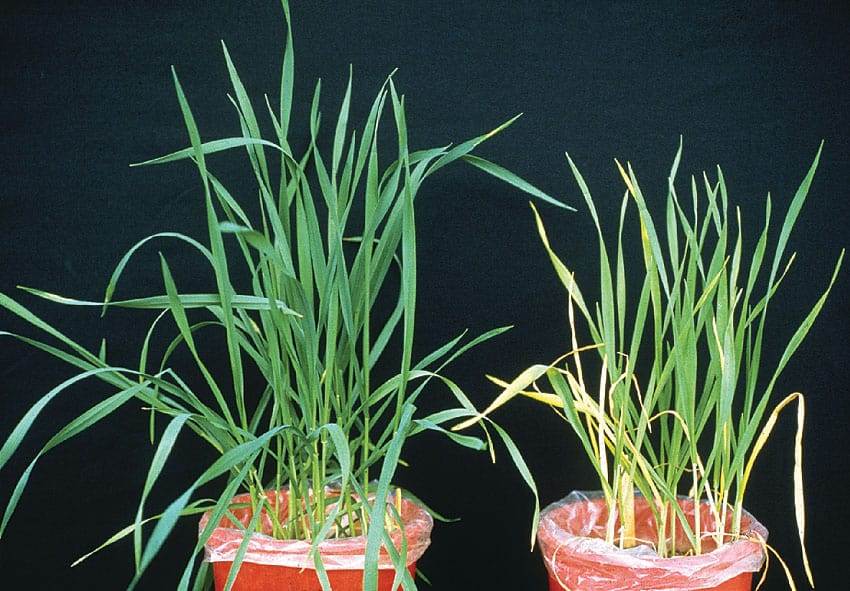
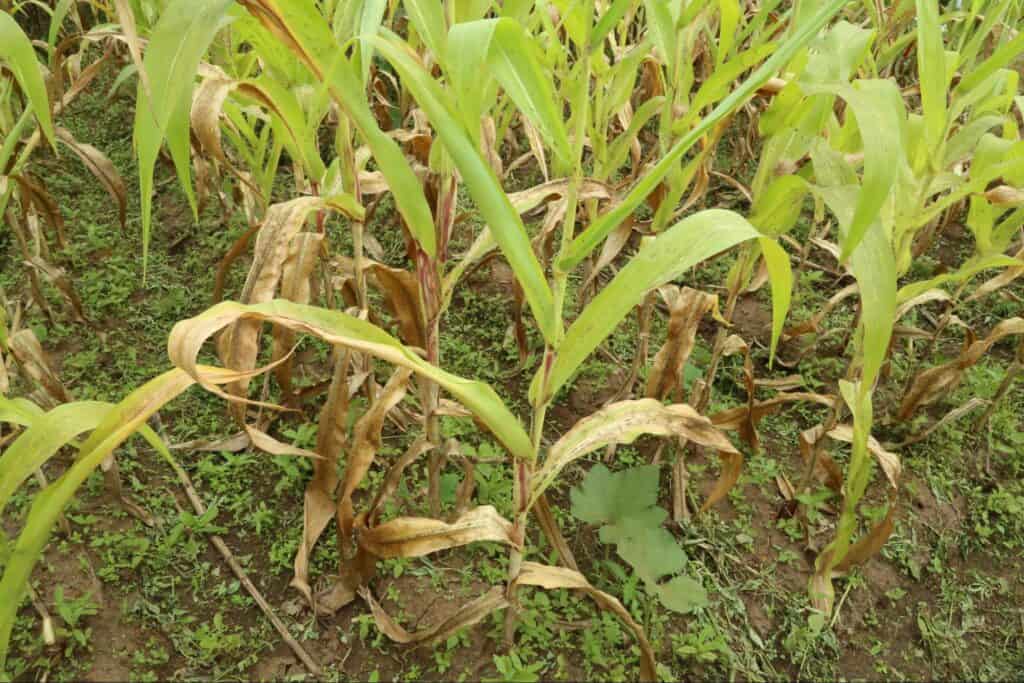
What’s curious about nitrogen is that nitrogen gas (N2) makes up about 78% of our planet's atmosphere. The air you are breathing at this moment is mostly composed of elemental nitrogen. Even still, nitrogen is often the most limiting nutrient for plant growth.
This scarcity of nitrogen in most soils is why it is one of the most important fertilizers used in agriculture. There is a reason why “N” comes first in the industrialized “NPK” fertilizers. This being said, too much nitrogen (especially any quantity in the form of chemical fertilizers) is dangerous and harmful to your plants. Nitrogen needs to occur not only in balance but in the right forms for healthy plant growth.
Chemical Fertilizers are Bad For Your Soil
Nitrogen in this form is usually pure chemical ammonia or nitrate. It is true that when you feed plants with these fertilizers, you may see quick results in plant growth, but there can be serious long-term consequences.
To begin, it is detrimental to your soil's organic matter. When chemical nitrogen is freely available in your soil, it stimulates bacteria that will aggressively feed on whatever organic matter you have in your soil. This results in your organic matter disappearing into thin air as bacteria convert it into carbon dioxide.
This surge of nitrogen-loving bacteria also sets a grave imbalance in your soil food web. Not only do you lose many beneficial bacteria, but these conditions also affect the beneficial fungi that are vital to your plant's health and immune function.
In the long run, nitrogen fertilizers will have negative impacts on plant nutrition and result in an increased incidence of pests and diseases. Not to mention, chemical fertilizers easily leech from the soil. This not only means you're losing the nutrients you paid for, but you are polluting neighboring soils and water.
Today’s Nitrogen Problem
Historically almost 99% of all fixed-nitrogen came from nitrogen-fixing plants. The rest was produced by the intense energy of lightning passing through our nitrogen-rich atmosphere. Today this has changed.
Following WW2, technology originally developed for the manufacturing of explosives was harnessed for the production of synthetic nitrogen fertilizer. While this arguably helped feed the population of the earth in what is dubbed “the green revolution”, it has also resulted in an environmental catastrophe. Today about half of the nitrogen entering the environment is man-made. Nitrogen pollution has resulted in severe soil degradation, ocean dead zones, and the exacerbation of climate change. The disbalance caused by this is of immeasurable proportions.
Shockingly, some estimates suggest that about 80% of the nitrogen in the average human body was synthetically produced! That means the nitrogen within the very proteins that you are composed of are mostly made in factories and not through the biological process it was supposed to come from.
How Do Plants Fix Nitrogen?
We’ve already discussed that plants fix nitrogen by allying with nitrogen-fixing bacteria. Plants cannot fix nitrogen on their own! This is something that has been understood for over a century, largely based on research conducted on Rhizobia bacteria associated with leguminous plants. While leguminous plants are the most famous and widely-used nitrogen fixers, there are other types of nitrogen-fixing plants out there that we will briefly discuss.
The Nitrogen Fixing Legumes
Leguminous plants are those in the bean family, Fabaceae. This includes nearly 20,000 species such as Peas, Lentils, Chickpeas, Acacia, Mimosa, and Clover just to name a few. Plants in this family range from small ground cover to large trees and exist for any climate in any form imaginable. The term legume is the botanical name for the type of fruit they produce, which consists of an outer pod that splits along 2 seams and contains 1 to 10+ seeds.
Most leguminous plants are well known for fixing nitrogen and are the favorite choice for this purpose.
How Legumes Fix Nitrogen
Legumes fix nitrogen in their roots on specialized structures called nodules. If you pull out a leguminous plant from the soil you can easily see these small round nodules hanging from the roots of the plant. Each of these nodules contains BILLIONS of nitrogen-fixing bacteria called Rhizobia.
Rhizobia occur naturally as free-living bacteria in soils, compost, and on all forms of organic materials. Legumes attract Rhizobia to their roots by secreting specialized flavonoids into the soils. These Rhizobia attach to the root hairs and trigger a series of physiological changes that result in the establishment of these bacteria within the roots. With a steady stream of carbohydrates in the form of organic acids provided by the plants, these bacterial colonies begin growing at exponential rates causing the growth of the root cells that results in the nodule.
Within these nodules, the anaerobic (oxygen-free) conditions necessary for nitrogen fixation are achieved. Using an enzyme called nitrogenase these bacteria turn atmospheric nitrogen into plant-available ammonium. When the nodules are young and low in nitrogen they are light in color and white. As they become enriched in nitrogen they start to a light pink or red color thanks to a compound called Leghemoglobin. As the plant absorbs this nitrogen the nodule turns green and eventually darkens.
Research is showing that instead of giving this ammonium directly to the plants, these bacteria convert it into amino acids like glutamine and asparagine before it is absorbed by the plant.
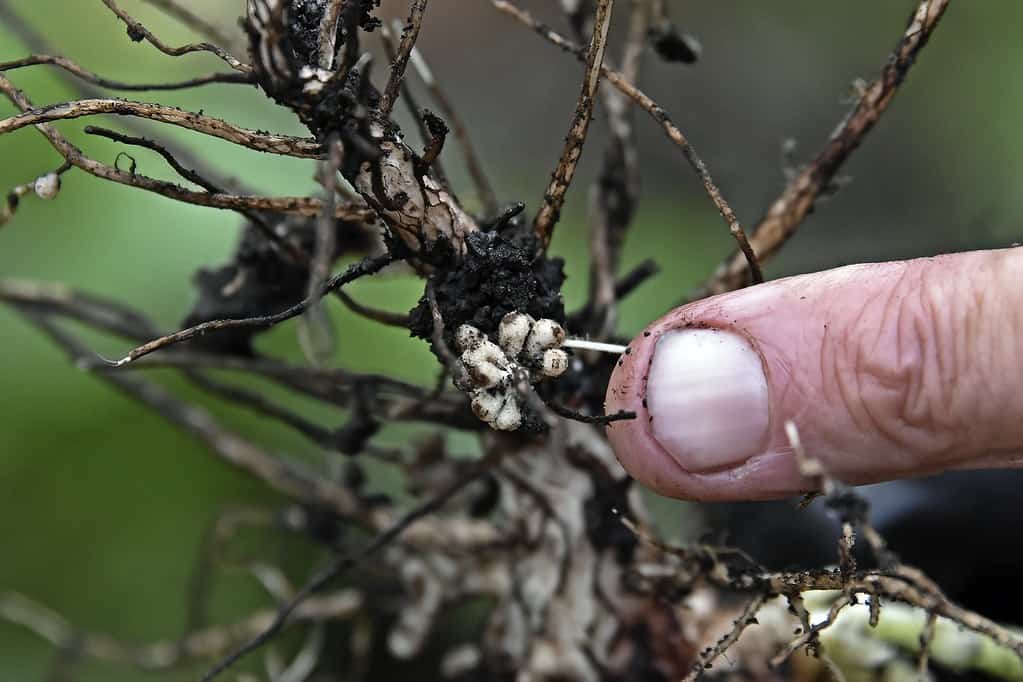

Other Nitrogen Fixing Plants
Nitrogen Fixing Actinorhizal Plants
In the past 50 years, it was discovered that other plants such as Alders, Mountain Mahogany, Ceanothus, and Sea Buckthorn fix nitrogen. They are commonly called “Actinorhizal'' and form a symbiotic relationship with a nitrogen-fixing bacteria called Frankia. Like legumes, these form nodule-like structures on their roots. All of these plants are perennial shrubs or trees. They are not often used in agricultural settings. This being said they do have the potential to be incorporated into gardens and readily occur as native species in many parts of the world.
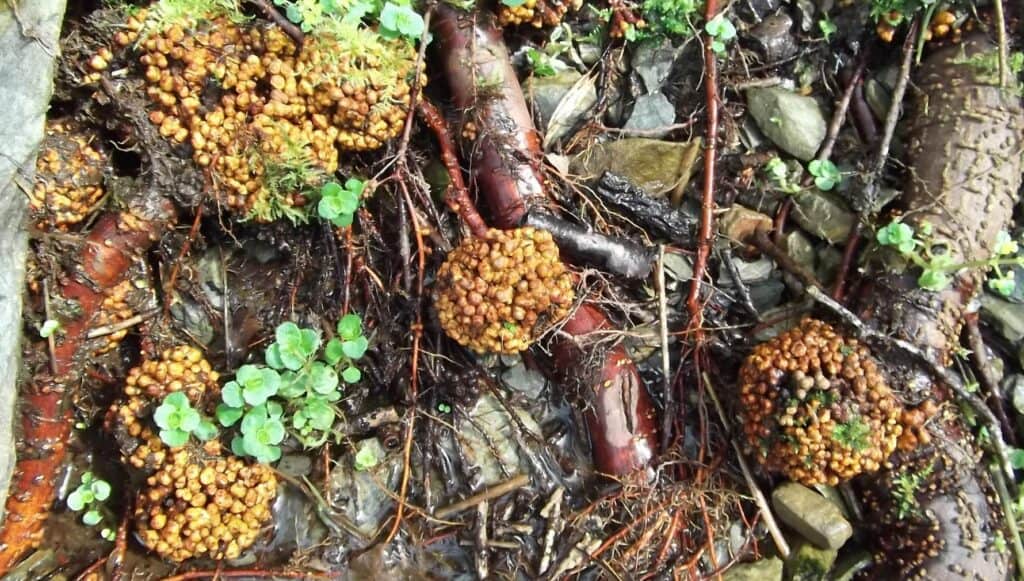
Non-Nodule Forming Nitrogen Fixing Plants
In the past decade tons of research has been showing that many different types of unexpected plants also fix nitrogen. This typically occurs through symbiotic relationships with bacteria that live as endophytes within the plant tissues, i.e. within the roots, leaves, or stems. For example, rice, sugar cane, corn, millet, and many other different plants in the grass family have been shown to have the ability to fix nitrogen. If you’ve ever seen aerial roots of corn covered in a slimy mucus, that’s nitrogen-fixing bacteria too!
Many different forest trees and crops are also being shown to form these unique associations. Many fast-growing species tolerant of unfertile soils may likely have some nitrogen-fixing capabilities. Lots of research is showing that nitrogen fixation is a lot more common than previously thought. While this is still cutting-edge research, it is already becoming a huge area of interest in the scientific community.
How Nitrogen Is Transferred To Soils and Neighboring Plants
The way nitrogen-fixing plants transfer nitrogen to the environment can be classified in two ways. These are;
- Decomposition-Based Transfer: The tissues of nitrogen-fixing plants (leaves, tender stems, flowers, and fruit) are high in nitrogen and thus add nitrogen into the soil when they decompose. They tend to have a carbon to nitrogen ratio ranging from 10:1 to 20:1, but this depends on the species and life stage. Most of the nitrogen fixed by plants ends up in their own tissues. Proper management can help increase the efficiency of incorporating this nitrogen into the soil.
- Below Ground Transfer: This occurs below ground through mycorrhizal fungi and root exudates. Mycorrhizal fungi conduct complex exchanges of nutrients from neighboring plants including direct transfers of nitrogen from nitrogen-fixing plants to non-nitrogen-fixing plants. Root exudates are organic compounds (flavonoids, organic acids, proteincs, etc.) that are released from the plant roots. Many of these are meant to stimulate microbial interactions in the soil while others are solely considered metabolic byproducts. Some of these compounds are rich in nitrogen which ends up entering the soil.
How To Integrate Nitrogen Fixers
There are many different ways to incorporate nitrogen-fixing plants into a garden, landscape, and permaculture design. They can be planted for the sole purpose of nitrogen fixation or they can stack functions by providing food, medicine, materials, or an attractive aesthetic. Proper management can help increase the efficiency of nitrogen transfer into the soil and neighboring plants.
Pruning and "Chop and Drop" are two techniques you can use to mobilize nitrogen from plant tissues to the soil. It is best to conduct this before the plant sets seed as at this point the nitrogen is concentrated in the seed. Plant tissues can be used as “green mulch” to decompose on the spot or moved near other plants that could utilize the extra nutrients. Alternatively, all this material can be cut into small pieces and piled up to make compost. Nitrogen fixing trees also produce large quantities of leaf litter than can be utilized in a similar manner.
Note: Nitrogen-Fixing Plants Don’t Always Fix Nitrogen
Countless studies have shown that when there is abundant nitrogen in the soil, nitrogen-fixing plants do not fix nitrogen. This is because the plants are smart, and if they can easily scavenge nitrogen from the soil then they won’t bother fixing it themselves. This is something important to consider when choosing where to incorporate nitrogen fixers. Poor soils will benefit the most from nitrogen-fixing species.
Is Inoculation Of Nitrogen Fixing Bacteria Necessary?
In most cases, the answer is no. Many different types of nitrogen-fixing bacteria are naturally occurring in soils, compost, and within different plant tissues. While you can find studies suggesting that inoculation with specific strains of these bacteria has beneficial effects on plant growth, this is not usually necessary in living soils. Unless you work in highly degraded conditions, with soils void of life, and with a history of agrochemicals then inoculations aren’t necessary.
Nitrogen Fixing Plants
Nitrogen Fixing Trees
Trees are often the best option for incorporating nitrogen fixers into your design. They are long-lived, produce large quantities of biomass, and tend to require little care. Their deep root systems are also great for sequestering other minerals and nutrients from deep in the soil profile.
Nitrogen-Fixing Trees can be incorporated into a design in many different ways.
- They can be part of an overstory component in food forests, especially since many leguminous trees have canopies that allow for the passage of some light.
- They can be planted on the edges of gardens, orchards, or other parts of your design. This way they help protect from wind, provide a perching habitat for beneficial fauna and provide nearby biomass.
- They can be interplanted in orchards or syntropic style designs.
How To Utilize Nitrogen Fixing Trees
- Many nitrogen-fixing trees such as Alder, Black Locust, and Inga make nice layers of leaf litter that act as a natural nitrogen rich-mulch. This can be left as is or moved to areas where it is needed most.
- Trees can be pruned or completely coppiced as needed to provide biomass. Small sticks and leaves can be incorporated directly into a garden as mulch. Bigger sticks and branches can be too, or they can be set aside for other purposes.
- Pruning may also cause some roots to die back which will also help incorporate nutrients into the nearby soil.
Authors Picks
- Black Locust (Robinia pseudoacacia)
Black Locust is a favorite tree amongst homesteaders and permaculture practitioners in temperate climates. It’s hardy, fast-growing, and makes an airy canopy that provides dappled light. The wood is extremely hard and of the highest quality for material purposes or firewood. The leaves are excellent forage for animals and the flowers are edible. The flowers also provide great nectar for pollinators. It grows well in all sorts of temperate environments but use caution as it can be mildly invasive.

- Gliricidia (Gliricidia sepium)
Gliricidia, also known as Madre de Cacao, Madera Negro, and Mata Raton, is a tropical tree species and a favorite amongst permaculturalists in these climates. It is hardy, easy to propagate, and grows quickly. It grows well in wet and dry tropics, even in very arid climates. It roots extremely easily and withstands rot, making it an ideal option for living fence posts. It takes well to coppicing and the wood is also great for materials or firewood. The foliage makes good forage for livestock and the flowers can be eaten once thoroughly cooked.Here you can see a fence made with living posts of Gliricidia. Photo by ezumbalaberenjena (CC BY-NC-ND 2.0).
- Alder (Alnus sp.)
Alder is a non-leguminous nitrogen-fixing tree that you are likely familiar with. They are common native species in temperate and even in montane-tropical climates. Their quick growth and abundant leaf litter are one of the most attractive qualities they bring to a permaculture system.
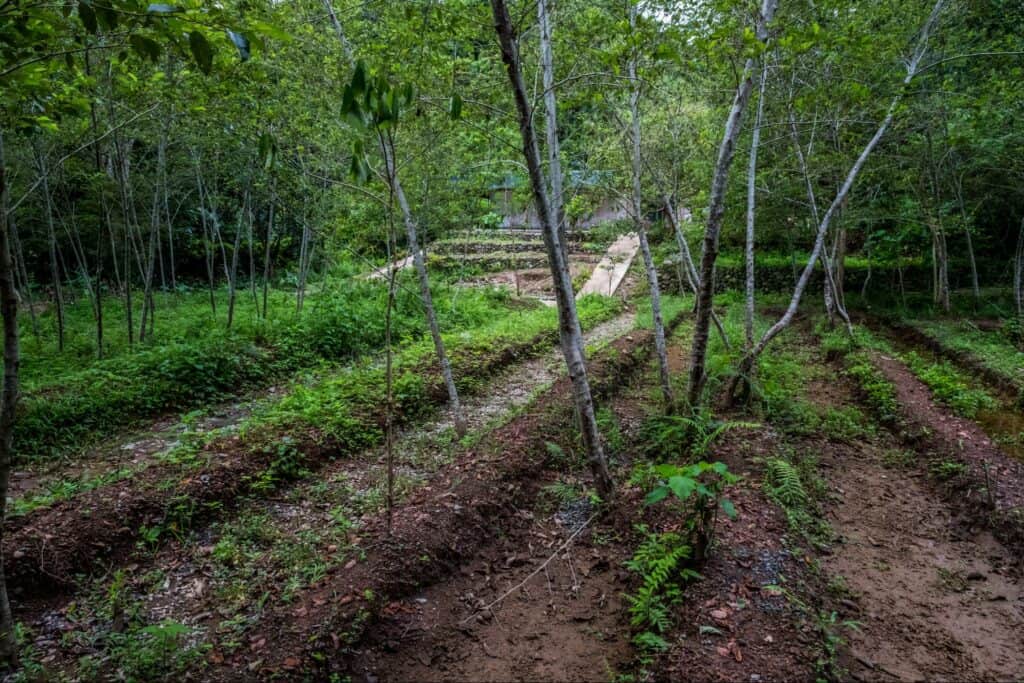
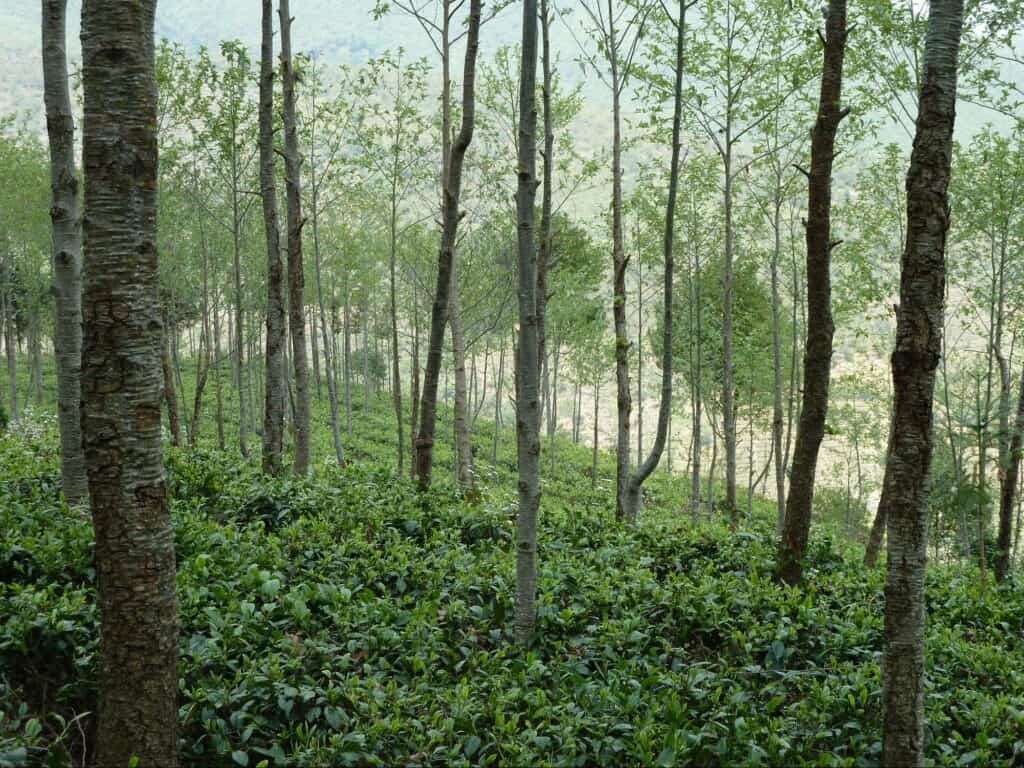
- Mesquite (Prosopis sp.)
Mesquite is one of the favorite nitrogen-fixing trees among permaculture practitioners working in arid climates. They are extremely drought resistant and make excellent shade. Their foliage makes excellent forage and nitrogen-rich biomass. The bean pods are edible and can be ground into a protein-rich flour!
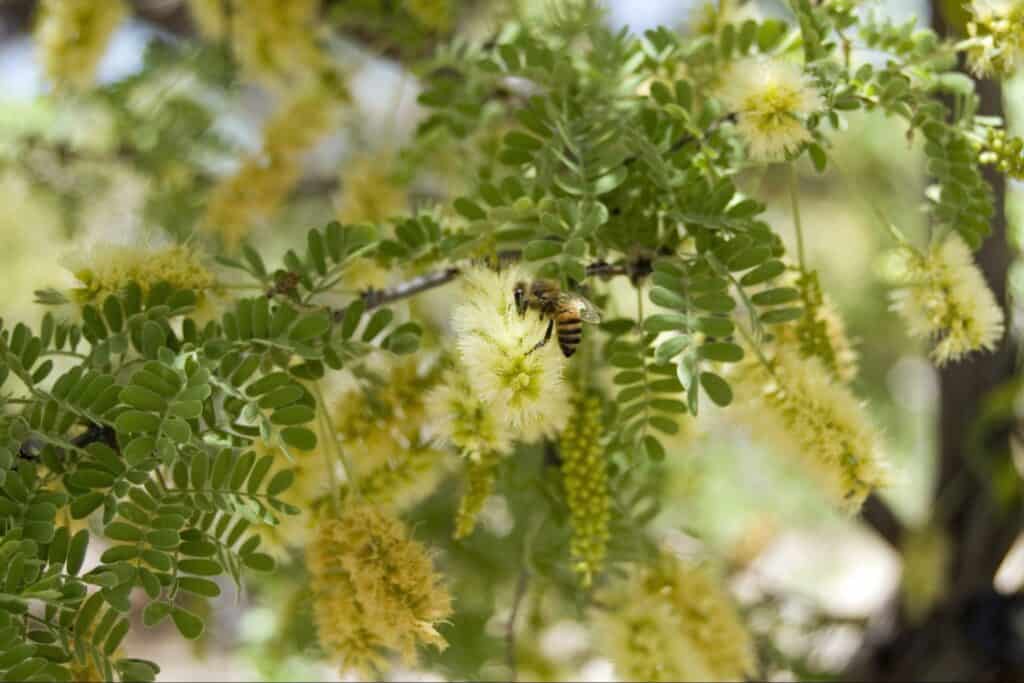
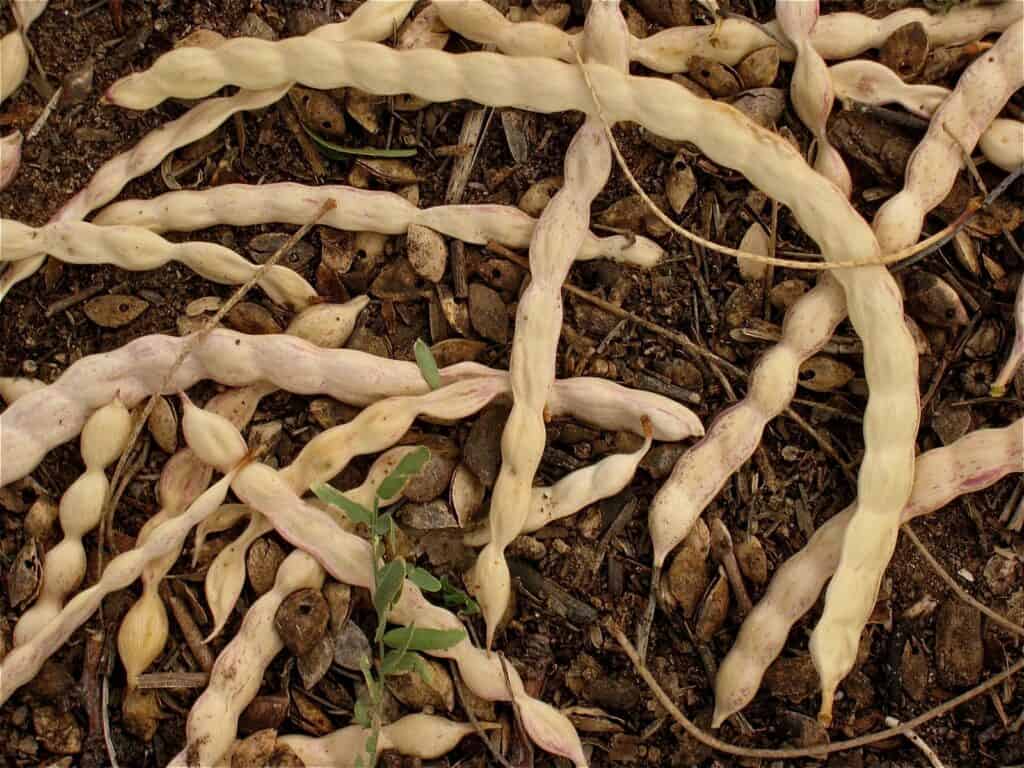
Other Notable Mentions
- Mimosa sp.
- Acacia sp.
- Ice Cream Bean (Inga edulis) and other Inga species.
- Tamarind (Tamarindus indica)
- Albizia (Falcataria moluccana)
- Firetree (Myrica faya)
- Sweet Thorn (Vachellia karroo)
- Desert Ironwood (Olneya tesota)
- Senna sp.
- Coral Tree (Erythrina sp.)
- Orchid Trees (Bauhinia sp)
- Hook-Thorn (Senegalia caffra)
Nitrogen Fixing Shrubs
These are medium-sized nitrogen-fixing plants. Unlike trees, these rarely provide valuable woody materials. Some may provide suitable leaf litter and others can be used as a “chop and drop”.
- Autumn Olive (Elaeagnus umbellata) and Russian Olive (Elaeagnus angustifolia)
These are both perennial shrubs with edible berries. They can be copied and also make strong wood that can be useful for tools or smaller sized posts. Their fruit hangs on the bush throughout the winter and is well known to attract wildlife.
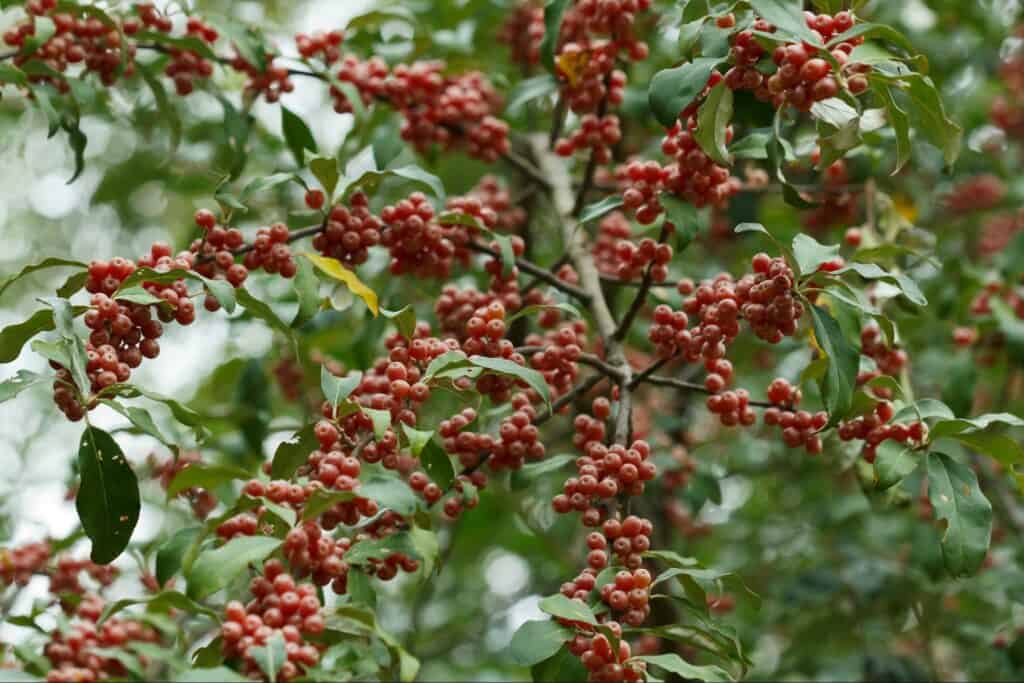
- Sea Buckthorn (Hippophae sp.)
Sea Buckthorn is a popular nitrogen-fixing tree that is well-known in Europe for its edible berries. These can be processed into jams, beverages, or eaten fresh. It does not take too well to coppicing but can be pruned to provide biomass.

- The Siberian Pea Shrub (Caragana arborescens)
The Siberian Pea Shrub is a marvelous nitrogen-fixing plant, especially in northern latitudes. It produces small pea-like fruit that is edible. These were said to be consumed in Russia and Siberia, particularly in communities or years where food was scarce. While it can be a bit laborious for harvesting, they also make a great addition to a chicken run where it will provide an extra food source! They also make great borders and windbreaks.


- Pigeon Pea (Cajanus cajan)
Pigeon Pea is one of the best nitrogen-fixing shrubs in tropical climates. It is easily propagated and grows with vigor. It can easily be coppiced to its base and it sprouts back gloriously. The seeds and foliage can also be eaten!
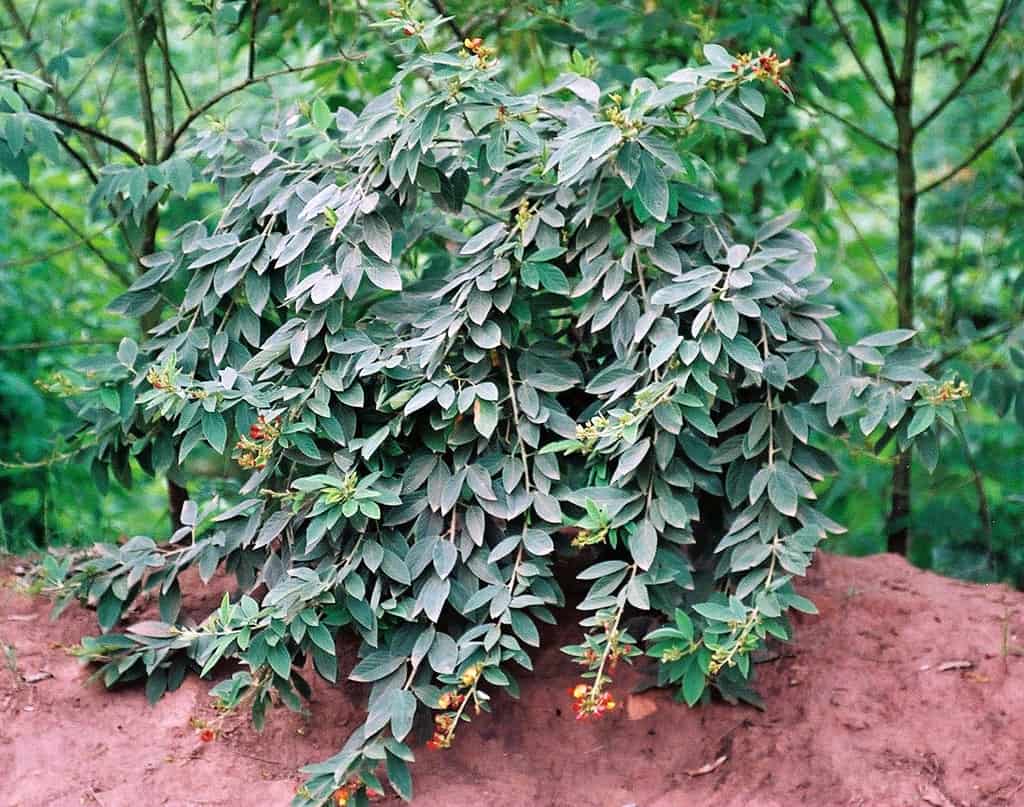
Nitrogen Fixing Herbs, Vines, and Annuals
Many of these are well-known food crops that also provide great nitrogen-rich biomass. Common nitrogen-fixing crops you are probably familiar with include Beans, Lentils, Chickpeas, Snow Peas, Alfalfa, Soy Beans, and Fava Beans. Many of these make great choices for use in crop rotation, particularly after planting nutrient-demanding plants like Tomatoes, Broccoli, Corn, and Potatoes.
Many of these plants also make great companion plants, such as is the case with the famous “Three Sisters” composed of (but not limited to!) corn, beans, and squash. I will mention that in this polyculture system, the beans (or whatever leguminous plant you choose) do not directly transfer nitrogen to the other crops. They promote the long-term soil fertility of the plot while providing an additional food source. This has been shown in numerous studies where leguminous plants are planted side-by-side with cereal crops. If your goal is to use your plant solely as a nutritional support species, you will want to chop and drop it well before it produces fruit.
- Fava Beans (Vicia faba)
Fava Beans are one of the most popular nitrogen-fixing plants in temperate climates. They grow quickly, produce good quantities of biomass, require no structural support, and make a pretty delicious bean (although some people have trouble digesting them). They are also a favorable fall, winter, or spring crop as they are tolerant down to frosty temperatures of 14F (-10C)! In some mountainous parts of Mexico, this plant is grown as a companion plant to corn and squash.

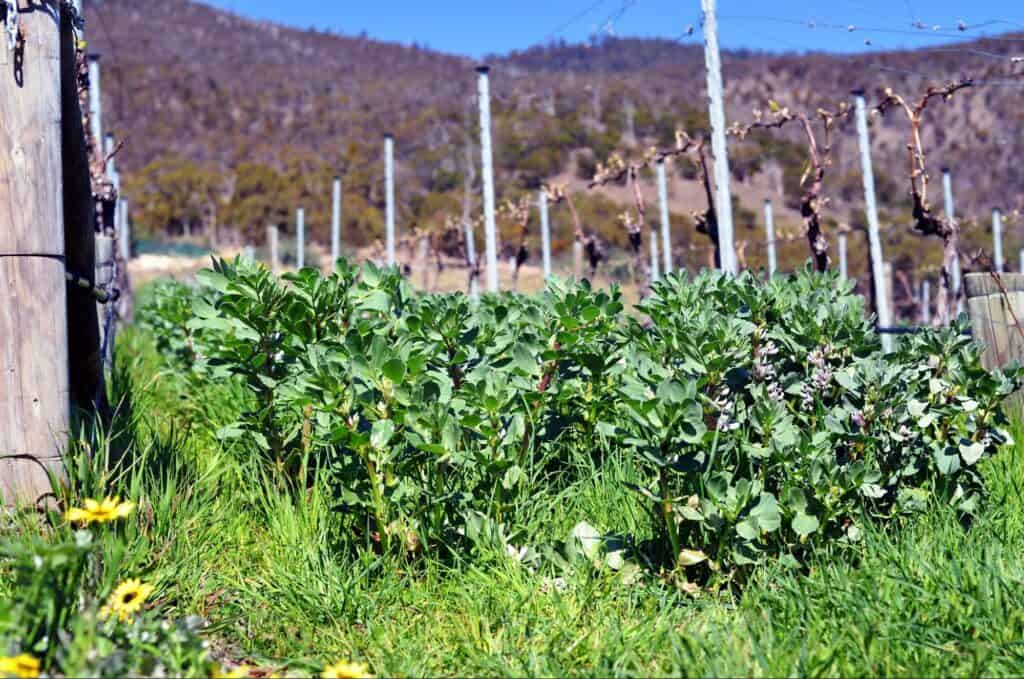
- Yard Long Beans (Vigna unguiculata)
These are fabulous beans to grow in warm climates. They are hardy and produce these long (>10 inches) pods that can be eaten as snap beans. Alternatively, the seeds can be cooked like regular beans. The foliage is rich in nutrients and makes great mulch.
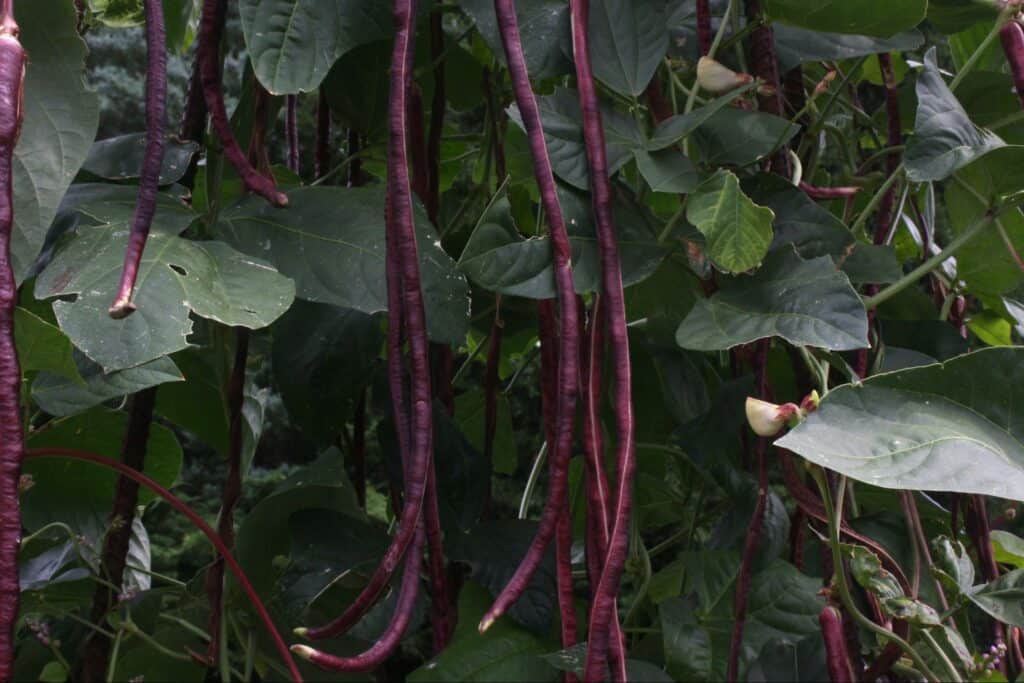
- Rattle Pods (Crotalaria sp.)
Rattlepods are various short-lived annuals in the genus Crotalaria that make excellent green manure. Some species of interest for this purpose include Crotalaria juncea, Crotalaria pallida, and Crotalaria grahamiana. They grow quickly, are bushy, and make tons of seeds. Their tender vegetation makes excellent green manure and quickly decomposes into the soil. Crotalaria longirostrata or Chipilin is also an interesting species in the genus with edible foliage (once cooked!) that is extremely high in protein. It is longer lived than the other members of this genus and is common in southern Mexico and Central America.
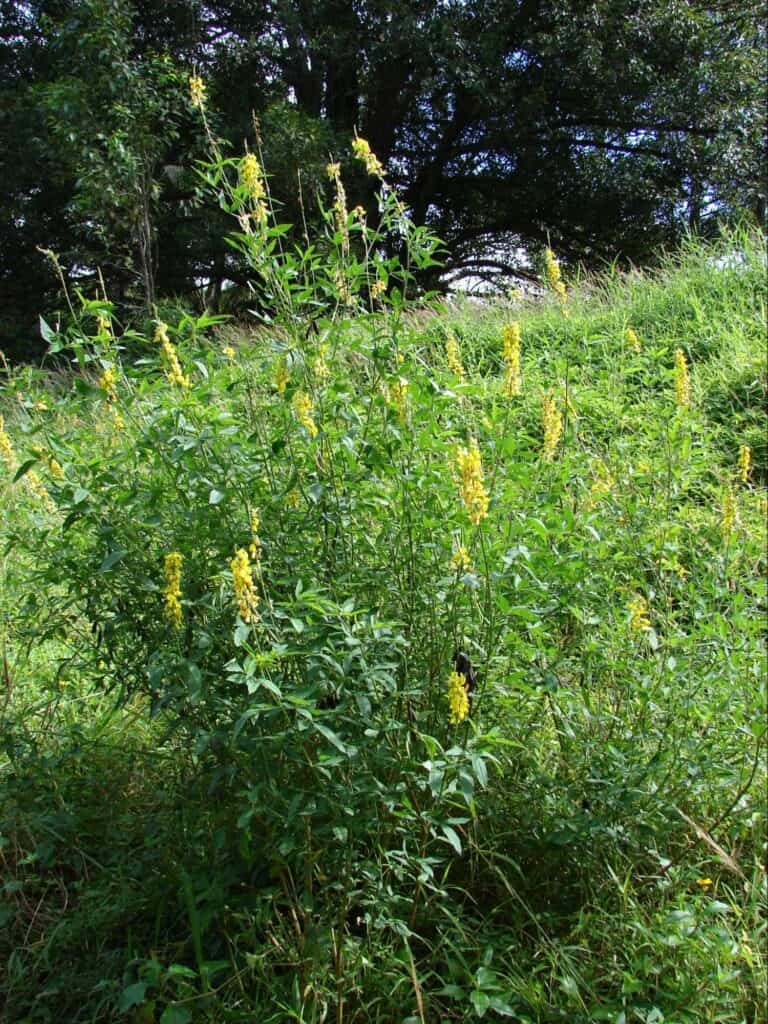
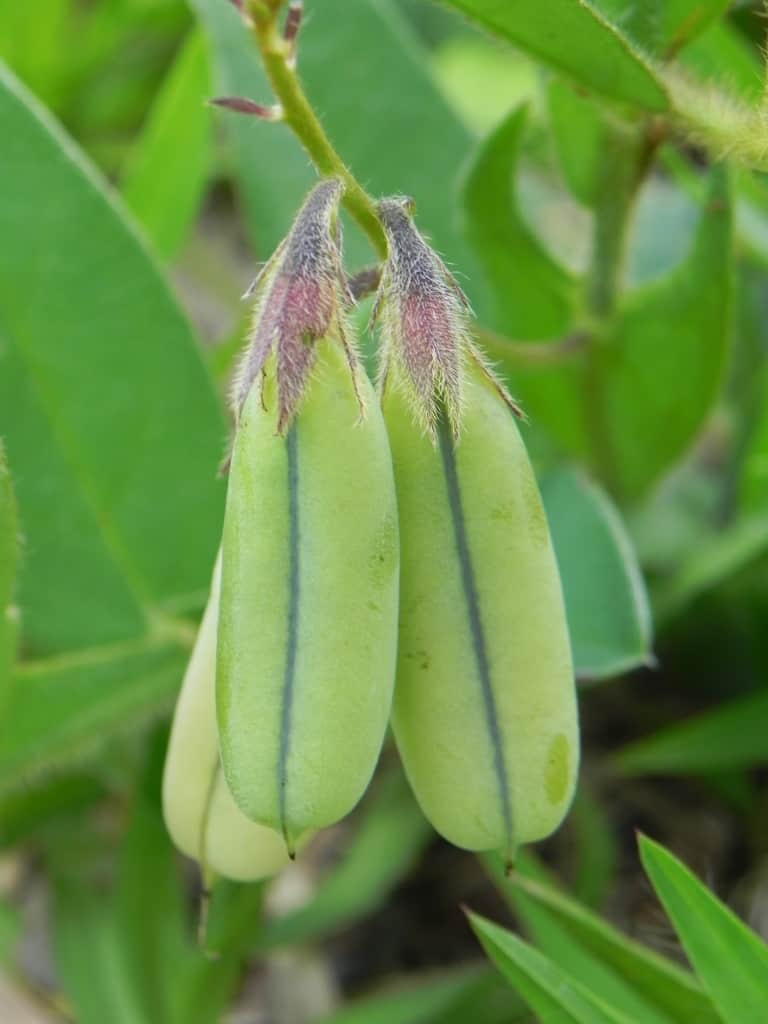
Nitrogen Fixing Ground Covers
Many low-growing ground covers can make an excellent choice for companion planting, crop rotation, or simply as an easy cover crop.
- Vetch (Vicia sp.)
There are various types of vetch commonly used in agriculture as cover crops. They are quick low-growing vines that tend to stay small in size. Hairy Vetch (Vicia villosa) is a favorite amongst permaculture practitioners. It is great livestock feed, attracts pollinators, and provides great biomass. Other good options are American Vetch (V. americana) and Cow Vetch (Vicia cracca). While these can be aggressive, it is easy to rip them out of the ground to eliminate them. Instead of “chopping” this plant, you can often just pull it out by hand without causing much soil disturbance.
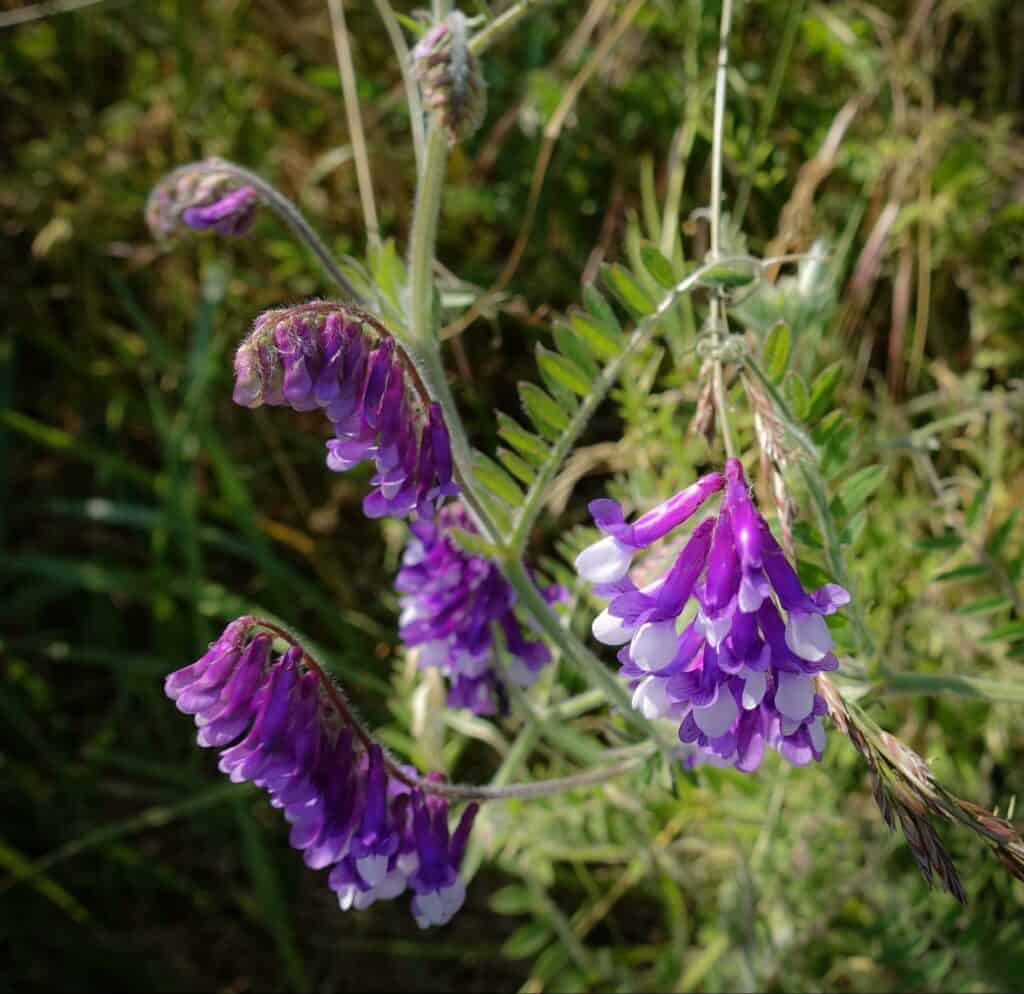
- Peanut Grass or Perennial Peanut (Arachis sp.)
These are non-edible peanut relatives that grow close to the ground and make excellent ground covers. Peanut Grass or Arachis pintoi is very low-growing and excellent for making lawn-like settings. Perennial Peanut (Arachis glabrata) grows a bit bushier and tends to make more biomass. The latter produces large rhizomes from which it is easily propagated. Alternatively, you can also plant regular edible peanuts although they are less hardy.
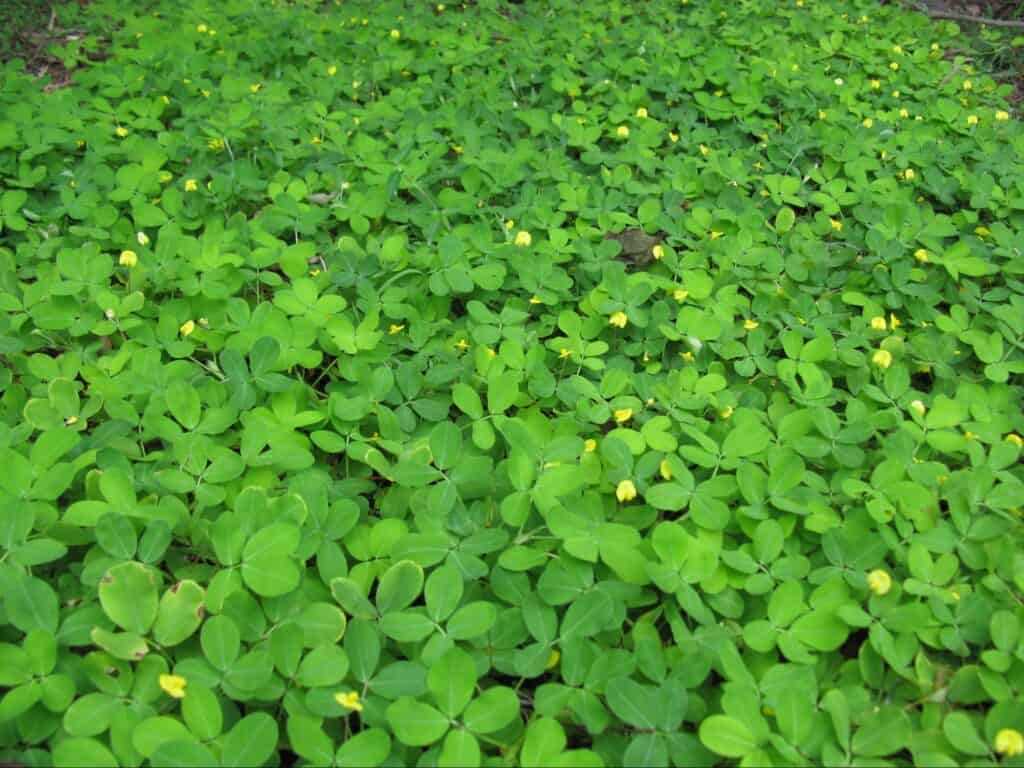
- Clover (Trifolium sp.)
Clover is one of the most used nitrogen-fixing plants. It grows low to the ground, resists compaction and human traffic, plus it creates a good amount of biomass. It is also generally less troublesome than other nitrogen fixers which can become weedy if not controlled properly. Clover also makes good food for livestock and attracts beneficial pollinators. White Clover (T. repens) and Red Clover (T. pratense) are the two species most commonly used. Subterranean Clover (Trifolium subterraneum) is also a good option.
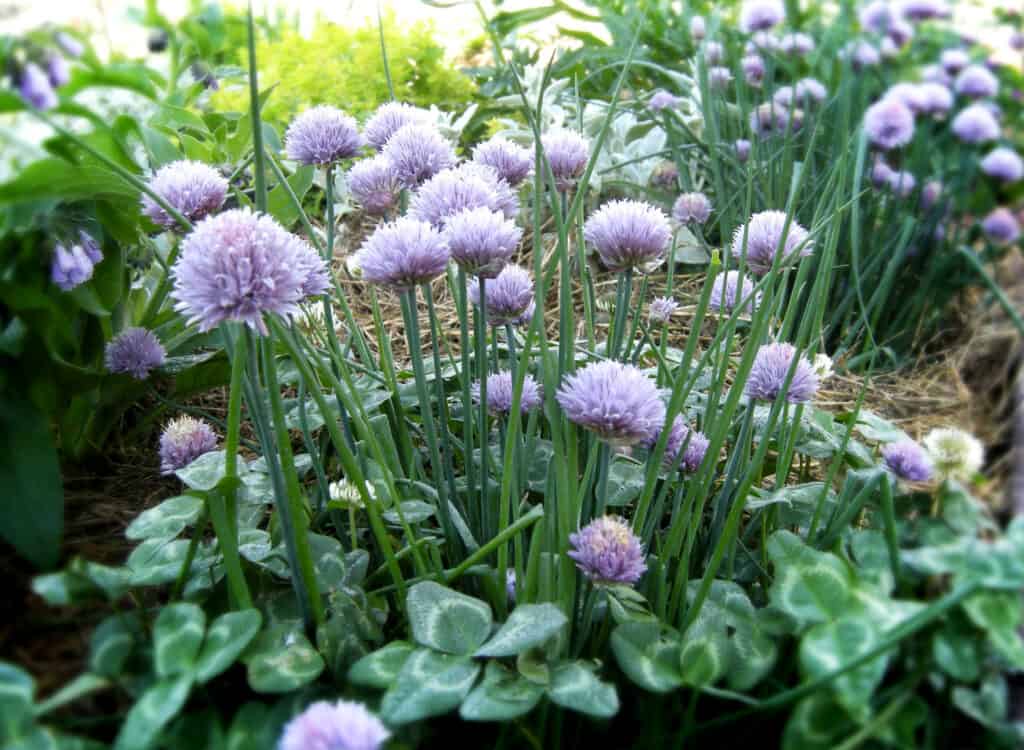
- Alfalfa (Medicago sativa)
While Alfalfa is often grown on an industrial scale with the use of many agrochemicals, it does not mean that the plant itself is inherently bad. It produces lots of biomass and grows easily in a wide range of different climates. It makes great animal forage for ruminants, chickens, or rabbits and also attracts many pollinators. Make sure to get organic seeds as there is a lot of genetically modified Alfalfa out there.
Final Thoughts on Plant Selection
This list is just the tip of the iceberg when it comes to nitrogen-fixing plants. There are so many options out there that they can’t all be listed here. This being said, I’d like you to consider two things when selecting or searching for the right nitrogen-fixing plant.
- Some of these nitrogen-fixing plants can be invasive. While this cannot only become a problem in your gardens/landscape, it can also become a problem for local biodiversity. Invasive plants are well known to outcompete local flora, reduce biodiversity, and further threaten native ecosystems (many of which are already under major threats).
- Consider finding native nitrogen-fixing plants if at all possible. Every biome and ecosystem has them. They are found in recently disturbed areas and wherever poor soils naturally exist. This way you can support native biodiversity in your design. Alternatively, there may also be naturalized non-native species that may be a better option than introducing new potential invaders.
Conclusion
If you haven’t incorporated nitrogen fixers into your project, there is no better time to start. This is often the first thing most people should consider in their design. This is particularly true for people working in degraded landscapes or areas with poor soil quality.
With proper planning, they can eliminate the need for nitrogen inputs into your design. You can easily just chop and drop this material and incorporate it into your gardens as mulch for ongoing fertility. Alternatively, you can also make fabulous composts just from this vegetation without the need for any food waste, animal manure, or other nitrogen-rich materials. With thousands of nitrogen-fixing plants to choose from, there is no doubt you will find at least one that works for your design!
 Here you can see a fence made with living posts of Gliricidia. Photo by
Here you can see a fence made with living posts of Gliricidia. Photo by